Updated 7 July 2025
Everything to know about lab created diamonds, including clarity, color, price, and certification
Everythingto know about lab grown diamonds, including clarity, color, price,certification and engagement rings.
Bottom Line Recommendation
You probably heard that diamonds are a girl’s best friend. Whilemost women love diamonds, only a few can afford them. They are not aspocket-friendly, after all. Nevertheless, diamonds are famous for engagementrings and wedding rings. Likewise, diamond earrings and bracelets makeexcellent gifts. Not to mention, they are loved by both men and women.
If you like staying up to date with your news in the world of jewelry anddiamonds, you probably know about lab grown diamonds. Many people are hesitantabout buying lab grown diamonds, though the stigma attached to them isundeserved.
Consumers tend to assume that lab grown diamonds are cheaper because thequality is inferior to natural diamonds. However, the truth is that theinvention’s popularity has caused the prices to drop. The diamond you mighthave bought for a higher price a year ago may be much cheaper today.
Lab grown diamonds are ideal for you if you do not care much about thetimelessness of natural diamonds. You can get beautiful lab grown diamonds at asignificantly budget-friendly price. Diamonds-USA has excellent-quality lab grown diamonds.
The prices are unbeatable compared to other diamonds on the market. Forexample, check out this stunning 1.41ct F IF diamond by Diamonds-USA or an incredible price.Believe us; you will not find a natural diamond as good as this one for such alow price!
Are you concerned the diamond ring you purchased today might be on display inother stores for a fraction of the price? If so, then purchasing a lab growndiamond may for your ring not be a wise decision.
Here are some lab grown diamonds from Diamonds-USA:
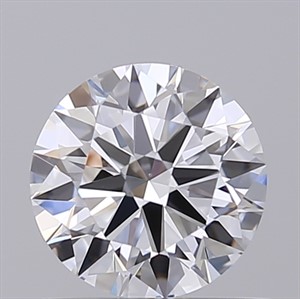
Image 1-0.70ct GIA E VVS2 Lab Grown
Round Diamond
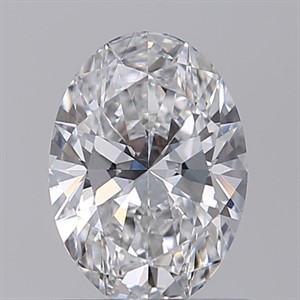
Image 2-10.07ct GIA E VVS1 Lab Grown
Oval Diamond
Shop lab grown diamonds at Diamonds-usa.com>>>
What are Lab Grown Diamonds?
Lab grown diamonds (also known as lab grown, artificial,cultivated, or synthetic diamonds) are manmade, though they have the samechemical, physical, and optical properties as natural diamonds. As such, thesecounterparts mirror the diamonds that result from the geological processes ofnature.
One significant difference between mined (natural) and lab grown diamonds ishow they come into existence. As the name implies, lab grown diamonds areformed in the controlled environment of laboratories. Nevertheless, they arereal diamonds- just like natural diamonds produced in uncontrolled naturalenvironments.
Diamonds cultivated in laboratories are typically much cheaper than naturaldiamonds. Not to mention, their price continues to decrease (up to 30 percentannually). Why? Well, lab grown diamonds have much resale value, contributingto a decrease in demand.
Checkout the 3.82 carat Stunning Oval Lab Grown diamond E VVS2. Its stunning beauty leaves no room for any questions.However, you have several factors to consider when purchasing or looking at thevalue/ price of lab made diamonds. In simpler words, consideration goes beyondwhat you see when you look at synthetic diamonds.
How Are Lab Grown Diamonds Made?
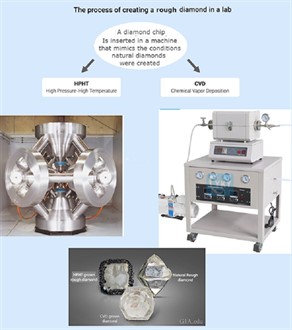
Next up, the rough diamonds
are sent for polishing.
Manufacturing lab grown diamondsinvolves processes that replicate the natural processes of natural diamondproduction. For example, intense pressure and heat from the environment encouragethe growth of natural diamonds. The pressure and heat transform the carbonatoms into gemstones we call diamonds.
Lab grown diamonds grow in a similar manner, except that the process is unnatural.It only takes a few years, instead of millions of years, to form.
The manufacture of manmade diamonds begins from a diamond seed, essentially a tinychunk of natural diamonds. It is placed and sealed in a special chamber thatmimics the natural conditions inside the Earth’s crust.
The carbon-coated diamond seeds eventually transform into a lab cultivated diamond.While it may be made from an artificial process, the synthetic diamond ischemically identical to its natural counterpart.
Chemical Vapor Deposition) and High-Pressure High Temperature arethe techniques used to create lab grown diamonds.
The High-Pressure, High-Temperature diamond-growing technique involves placing intenseheat (approximately 1,700 degrees Celsius) and pressure (approximately1.5million pounds per square inch) on the carbon-coated diamond seeds.
On the other hand, the Chemical Vapor Deposition technique uses significantly lessheat and pressure. Additionally, this method involves introducing a mixture ofchemical gases to the tiny pieces of diamonds. These gases help to break downthe diamond seeds and harden them. As a result, crystallization takes place tomake carbon atoms.
Both the diamond-growing methods give the same result. HPHT and CVD methods helpcreate manmade diamonds from scratch. It is only a matter of a few weeks beforeyou get beautiful lab grown diamonds.
Do you want to learn more about how lab grown diamonds are manufactured? Or, youmay want to learn how to choose the right gemstone for your jewelry. If so, youcan find all the information you need and excellent guidance by visiting theDiamonds-USA Labgrown diamonds search page.
Diamonds-USA Declaration
Indeed, diamonds are stunning, and their beauty is unmatched.Without a doubt, they make an excellent high-end purchase. However, we do notbelieve in marketing that forces consumers to believe diamonds should be the onlychoice for engagement jewelry, including rings, bracelets, and necklaces.
We do not intend to convince people to buy diamonds for any upcoming specialoccasion. In fact, we aim to educate and help people who do not know much aboutdiamond shopping. If you are planning to buy a diamond, we can help you findthe best piece at the best price.
At Diamonds-USA, we ensure an excellent balance of quality for a big piece ofdiamond within a budget-friendly range. Our goal is to help you avoid anyobstacles leading to the wrong decision.
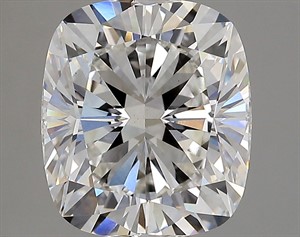
Image 4-A Beautiful Example of a Lab Grown Diamond
Are LabGrown Diamonds Real?
Before getting into the more detailed part, let us get somethingout of the question. Undoubtedly, lab grown diamonds are identical to naturaldiamonds in appearance. Here, it is crucial to note that synthetic diamonds arenot the same as cubic zircon or other diamond simulants.
As already discussed, synthetic diamonds have identical chemical makeupto natural diamonds. In simple words, lab grown diamonds are diamonds- evenreal ones. Take a look at this stunning 3.08 Pear shaped diamond G VS1 from Diamonds-USA. Whatdo you think about the lab grown diamond? Does it look different from a naturaldiamond? It probably does, and that is because it is different.
This post primarily focuses on the question regarding the value of lab grown diamonds.
Lab Grown Diamonds vs. Natural Diamonds
It must be abundantly clear by now that lab grown, and naturaldiamonds are different in how they are made. However, that is not all; otherthings like rarity, desirability or demand, price, and resale value also makethe two different.
The table below provides a brief yet informational breakdown of the factorsthat make natural and lab grown diamonds different.
|
Natural Diamonds
|
Lab Grown Diamonds
|
|
Formed within the Earth’s crust after millions of years
|
Produced in labs much quicker than natural diamonds (in a few weeks only)
|
|
Constructed with carbon atom structures
|
Constructed with carbon atom structures
|
|
Each piece is unique
|
Can be produced in bulk
|
|
Very expensive with a resale value over -50 percent
|
Significantly low price and zero resale value
|
|
Available in a considerable range of shapes and carat size
|
Available in various colors, shapes, and carat sizes
|
|
More desirable for engagement rings
|
Not as much desirable for engagement jewelry
|
How Can You Tell the Difference Between Natural and Lab GrownDiamonds?
Truthfully, telling the difference between natural and lab growndiamonds is impossible. Even if you are a gemologist, you need specializedequipment to identify and distinguish between natural and lab grown diamonds.Ideally, looking at the grading report is the best way to tell the difference.
Typically, professional gemologists use magnification to determine whether apiece of diamond is mined or grown in the lab. This practice allows them toview the nature of the diamonds’ inclusions. But how can the inclusions tellwhether a diamond is natural or lab grown?
In a natural diamond, the inclusions will appear slightly different than thosein a lab grown diamond. Sometimes, the diamonds also differ in their light-reflectingabilities. Generally, distinguishing the two is impossible by simply looking atthe diamonds.
Does it sound unbelievable? Pick a diamond you like better and see whether youcan tell how it was produced.
Are Lab Grown Diamonds Worth Anything?
Truth be told, this question is somewhat challenging to answerbecause we cannot tell you for sure.
Simply put, lab grown diamonds are much more affordable than their naturalcounterparts. However, they may not be as good as an investment. But then again,viewing your diamond as an investment is not exactly wise. That said, youshould pay attention to the value of lab grown diamonds.
Let us assume the average natural diamond retains approximately 55 percent ofits value long after your initial purchase. Ultimately, your natural diamond’smarket value will rise; given the history of diamonds, the price increasesconsistently.
That way, you should get half the diamond’s original price at a minimum. Not tomention, selling your natural diamond at a much higher price is possible.
Let us view a real example. This one is a stunning1.70ct diamond G SI1 from Diamonds-USA. It offers an incrediblevalue at the price of $10741. We inquired a few diamond-purchasing companieshow much money they would pay for this diamond.
Nearly all of the companies we asked loved the diamond. More importantly, theywere all willing to pay $5370 for the natural diamond. See, this diamondquickly received 50 percent of its original price. The same quality lab grown 1.70 G VS2 off the Diamonds-USA website is $680.
The bottom line for out-of-the-pocketexpenditure:
· For natural diamonds, it is $10741-5370(50% of 10741)= $5371
· For lab grown diamonds, it is $680-0=$680
Regardless of the synthetic diamond price, they do not have anyresale value. Look at this 2.01ct diamond from Diamonds-USA. It isstunningly beautiful, easy to win anyone’s heart, and looks gorgeous every timethey wear it. Yet, jewelers are unlikely to buy it.
When trying to resell it on online marketplaces like eBay, you will not getmore than a few pennies for your lab grown diamond.
As such, keeping the value perspective in mind, lab grown diamonds are not theright choice for investors. You will need to purchase lab grown diamonds at aconsiderable discount to justify giving up natural diamonds’ value retention,which is today’s prices on the Diamonds-USA website.
On the one hand, earth-mined diamonds lose approximately 50 percent of theirvalue immediately after purchase, whereas lab grown diamonds lose the entirevalue. On the other hand, lab grown diamonds are at least 85 percent less thancomparable natural diamonds.
Déjà Vu
Today, the lab grown diamonds market is in the same phase aswhen lab grown emeralds entered the gem world in the early 90s. During thattime (and even today), emeralds were listed among the rarest gems available onthe market.
However, technological advances and newer innovations allowed manufacturers tomanufacture virtual copies of natural emeralds. It is fair to say thatconsumers were highly excited when lab grown emeralds hit the market. More andmore people started buying these emeralds, and the demand kept increasing.
As such, more lab grown emeralds were used in jewelry pieces due to theincrease in demand. Reputable jewelers also started using them in theirjewelry, including rings, bracelets, etc. However, the changes did not stopthere.
As with other technologies, the competition began flooding in as the demandincreased. The prices for lab grown emeralds dropped unbelievablyfast.
Consumers purchased emerald jewelry in Service Merchandise for$79 to $99. However, they were only famous for around two years before people’sexcitement faded. While they are still available, lab grown emeralds areanything but popular.
Is Comparing Lab Grown Diamonds with Lab Grown Emeralds Fair?
Why did we tell you the story of lab grown emeralds? Ofcourse, the trend patterns are similar, though lab grown diamonds are not intheir peak phase. Then, is it fair to compare lab grown emeralds ofthe 90s with today’s lab grown diamonds? While we cannot give you a singleanswer, let us discuss what we think.
From a technical perspective, assuming that the prices of lab grown diamondswill not plummet is difficult and not clever. With no cap on supplies, thescale economies and newer innovations will eventually force prices down.
Onto the next part- will the manmade diamonds’ popularity also fade away? Thisone is a much trickier question. Considering the history of lab grown emeralds,lab grown diamonds may see a similar future.
However, while emeralds are stunning, they are not as morally valuable asdiamonds. For example, people prefer diamonds over emeralds for engagement andwedding jewelry.
Should You Buy a Lab Grown Diamond?
Here, we are talking about individuals on the hunt forengagement rings. If you are one of them, you can save cash by choosing adiamond ring from Diamonds-USA rather than purchasing anatural one.
However, you should feel comfortable with the possibility that you might neverreceive a reasonable price. Additionally, you will likely see similar jewelrypieces in the future for a much less price rate.
That said, people may have several other reasons for picking lab grown diamondsinstead of natural ones. Anyone making this decision should recognize that lab growndiamonds already lose all their value, which is negligible comparing to naturaldiamonds.
Check out these beautiful rings. If you replace the diamonds in these ringswith a Diamonds-USA lab grown diamond, you will save a nice chunk ofmoney.
Engagement Ring Inspiration (Click a Ring for More Information)

· Image 5-1.70ct Round Diamond Engagement Ring
(EX-Cut F-Color VS1-Clarity Wide Cathedral Platinum
Solitaire ring
CHECK PRICE

· Image 6-3 carats Trellis 5 lab grown diamond ring
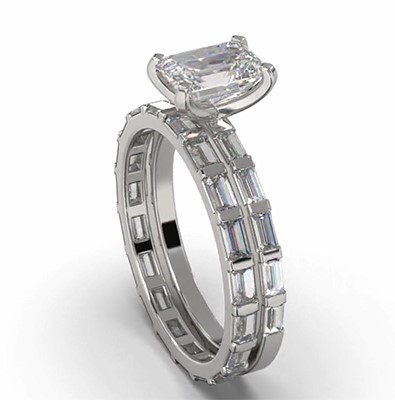
Bridal Set with Side Baguette Diamonds
CHECK PRICE
Best Lab Grown Diamonds: Diamonds-USA Recommendation
Diamonds-USA is excellent for the best value and highest qualitylab grown diamonds. It may be the best place for your purchase. The prices areunbeatable, far less than other prominent market players.
Believe us; only a few reputable online merchants have as extensive a range oflab grown diamonds as Diamonds-USA. Staying with a trusted seller when buyinglab diamonds for your jewelry is critical. Settling for an unverified retailerbecause of a lack of selection in other places is never wise.
With lab diamonds, it is easy to be scammed. At Diamonds-USA, you can be sureabout paying the cheapest price for your lab grown diamond.
Here are some handpicked inspirations of lab diamonds we found for you onDiamonds-usa.com:
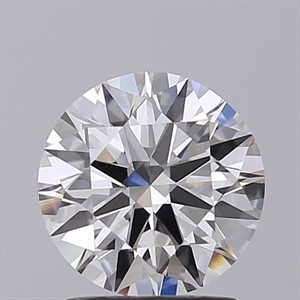
Image 8-2.62Ct GIA E VVS2 Round
Lab grown Diamond
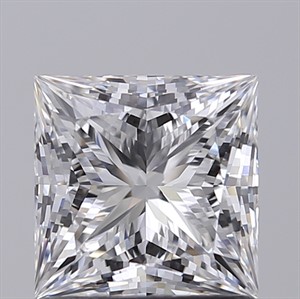
Image9-3.10 carat GIA E-VS1 Princess
Lab grown diamond
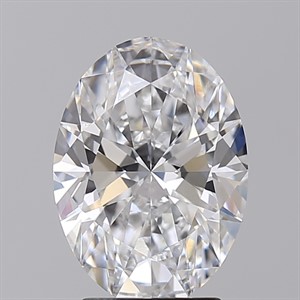
Image10-3.04, Lab Grown Oval GIA D VVS2
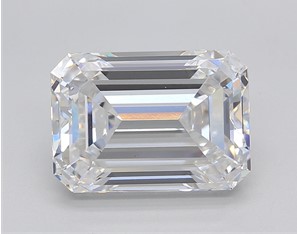
Image11-5.07 Ct GIA E VS1 Emerald
Lab grown Diamond
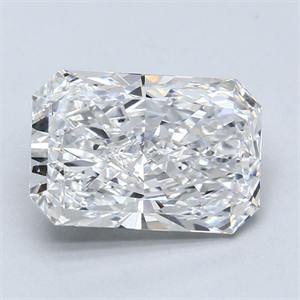
Image12-4.02 GIA F VS1 Radiant
Lab grown Diamond
Bottom Line
You do not need to feel obliged to buy a diamond. It entirelydepends on your preference.
However, if you have decided to buy a diamond, being aware of the value-relatedconcerns is necessary. After all, you do not want to invest a hefty sum ofmoney on a product that will be sold at a much lower price shortly.
However, if you only care about the wow aspect of diamonds, lab grown diamondsare excellent! Diamonds-USA has been the pioneer in online diamond sales since1997! You will be stunned by the extensive range of exclusive loose diamondsavailable at fantastic prices.
What you'll Love AboutDiamonds-USA
· No questions asked returns (within 30 days of receivingthe package)
· Insurance appraisals
· Personal care
· Lifetime warranty
· Highest standard finishes
· Free international shipping
· Best-in-class packaging
· Best-in-class high-quality videos of all diamonds in stock
![Black Friday Sale]()




 ​
​